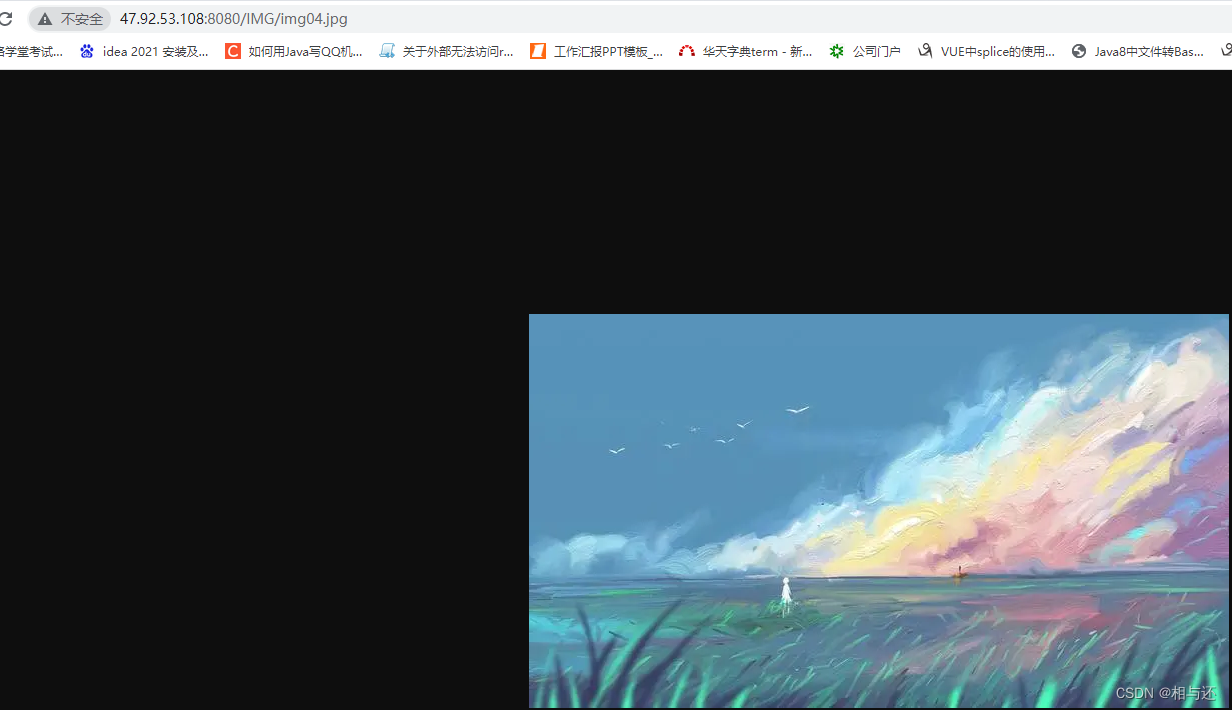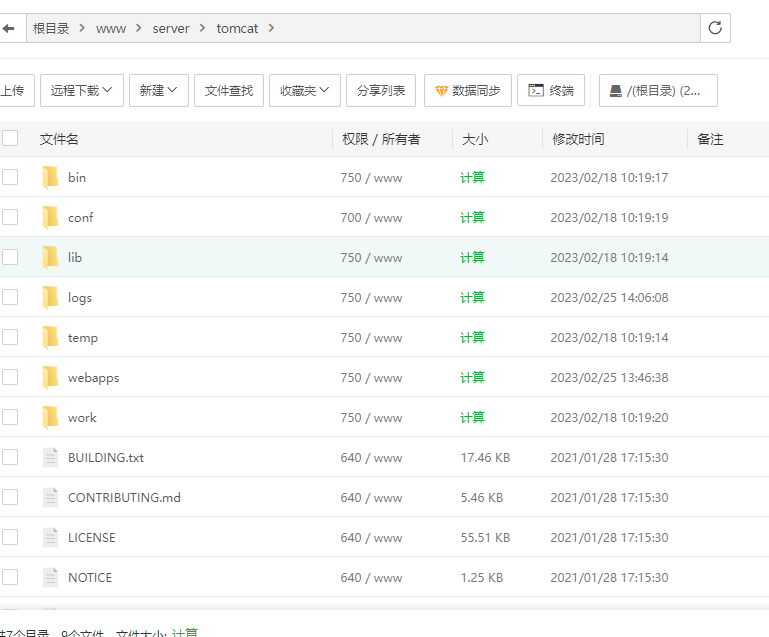前言
在服务器上,当我们启动了tomcat,就可以以
http://ip地址:8080/文件路径/文件名
的方式,进行访问到我们服务器上处于tomcat的webapps文件夹下的文件
如图:

上面我是用的
http://47.92.53.108:8080/IMG/img04.jpg进行访问文件
于是为了可以往上面加文件,我们有两种方式,一种就是直接复制文件到路径上,
另一种自然是通过代码的方式,调用接口往上面上传文件
准备工作
首先你得安装tomcat

安装完成后后启动
然后,需要注意的是,为了让我们能够访问文件,那么我们需要做这么一件事,开放服务器的安全策略
把端口8080放开

为了能够成功上传文件,需要放开tomcat的写权限,
即解决报错returned a response status of 405 Method Not Allowed
在tomcat的conf文件夹,找到web.xml文件,添加如下代码
<!-- 使得服务器允许文件写入。-->
<init-param>
<param-name>readonly</param-name>
<param-value>false</param-value>
</init-param>
注意,该代码需要在servlet标签内部添加,即:
<servlet>
<servlet-name>default</servlet-name>
<servlet-class>org.apache.catalina.servlets.DefaultServlet</servlet-class>
<init-param>
<param-name>debug</param-name>
<param-value>0</param-value>
</init-param>
<init-param>
<param-name>listings</param-name>
<param-value>false</param-value>
</init-param>
<!-- 使得服务器允许文件写入。-->
<init-param>
<param-name>readonly</param-name>
<param-value>false</param-value>
</init-param>
<load-on-startup>1</load-on-startup>
</servlet>
加完代码记得重启tomcat
上传文件代码
在pom.xml文件加入代码:
<!-- 跨域上传依赖-->
<dependency>
<groupId>com.sun.jersey</groupId>
<artifactId>jersey-core</artifactId>
<version>1.18.1</version>
</dependency>
<dependency>
<groupId>com.sun.jersey</groupId>
<artifactId>jersey-client</artifactId>
<version>1.18.1</version>
</dependency>
@PostMapping("/upLoadImg")
@ResponseBody
public String upLoadImg(MultipartFile myfile){
String path = "http://服务器公网ip:8080/tomcat的webapps下的文件夹名称/";
//为上传到服务器的文件取名,使用UUID防止文件名重复
String type= myfile.getOriginalFilename().substring(myfile.getOriginalFilename().lastIndexOf("."));
String filename= UUID.randomUUID().toString()+type;
try{
//使用Jersey客户端上传文件
Client client = Client.create();
WebResource webResource = client.resource(path +"/" + URLEncoder.encode(filename,"utf-8"));
webResource.put(myfile.getBytes());
System.out.println("上传成功");
System.out.println("图片路径==》"+path+filename);
}catch(Exception ex){
System.out.println("上传失败");
}
return "上传成功";
}
以上会
随机生成uuid作为文件名
如果想保留原本文件名称,参考如下代码
有一个需要注意的是:如果以原文件名命名进行上传,文件名不能包含中文
否则会报错400
@PostMapping("/upLoadImg")
@ResponseBody
public String doRemoteUpload(@RequestParam("file")MultipartFile file){
String path = "http://服务器公网ip:8080/tomcat的webapps下的文件夹名称/";
String filename= file.getOriginalFilename();
try{
Client client = Client.create();
WebResource webResource = client.resource(path +"/" + filename);
webResource.put(file.getBytes());
}catch(Exception ex){
return "上传文件失败:"+path+"/"+filename;
}
return "上传文件成功:"+path+"/"+filename;
}
导入的import为:
import com.sun.jersey.api.client.Client;
import com.sun.jersey.api.client.WebResource;
删除服务器文件
@GetMapping("/deleteUploadImg")
@ResponseBody
public ResultVO deleteUploadImg(){
String path = "http://服务器公网ip:8080/tomcat的webapps下的文件夹名称/文件名";
try{
Client client = Client.create();
WebResource webResource = client.resource(path);
webResource.delete();
}catch(Exception ex){
return "删除文件失败:"+path+"/"+filename+ ex.getMessage();
}
return "删除文件成功:"+path+"/"+filename;
}
如果需要 删除文件
只需要把文件的路径传入
并且使用WebResource的delete方法即可
结语
以上就是直接通过tomcat跨域上传文件到服务器的方式
























 591
591











 被折叠的 条评论
为什么被折叠?
被折叠的 条评论
为什么被折叠?








